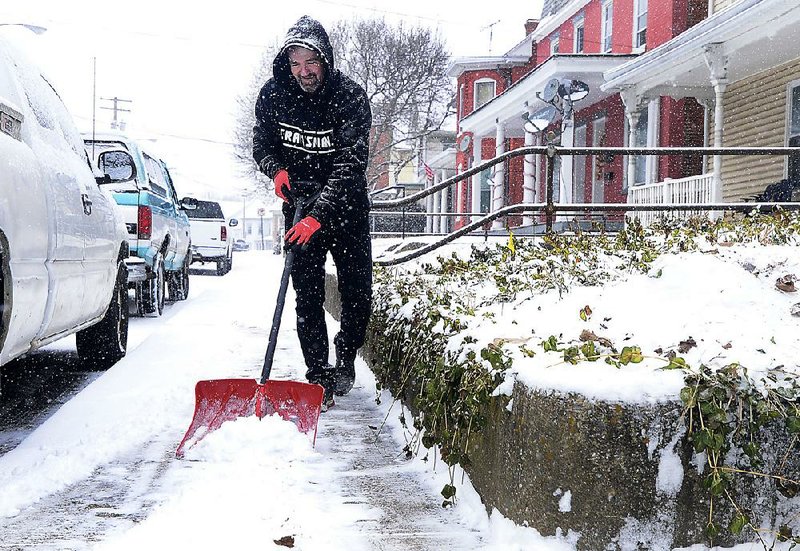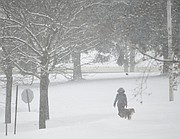CHICAGO -- The dangerous cold and heavy snow that hobbled the northern U.S. this week has retreated, but not before exacting a human toll: more than two dozen weather-related deaths in eight states and hundreds of injuries, including frostbite, broken bones, heart attacks and carbon monoxide poisoning.
In Illinois alone, hospitals reported more than 220 cases of frostbite and hypothermia since Tuesday, when the polar vortex moved in and overnight temperatures plunged to minus 30 or lower -- with wind chills of minus 50 or worse in some areas. Wind chill is a calculation to describe the effect of wind and cold on exposed skin.
Hennepin Healthcare in Minneapolis normally sees around 30 frostbite patients in a winter. It treated 18 in the past week, spokesman Christine Hill said Friday.
"I definitely saw more frostbite than I've ever seen in my entire career just in the last three days," said Dr. Andrea Rowland-Fischer, an emergency department physician at Hennepin Healthcare.
Most of those patients, she said, had underlying problems that made it difficult for them to take care of themselves: the developmentally delayed, the mentally ill, the very young and the very old. They also included people with injuries related to drugs and alcohol -- people who passed out or did not realize they were cold or injured.
"It's heartbreaking when there are people who can't take care of themselves and get exposed, just because they either escape from the care that they're being given or because they're not being supervised."
Others got frostbitten hands, feet, ears and faces after being exposed to the cold for just a short time. That included people whose cars wouldn't start or who got stuck outside for other reasons, as well as those who just didn't think they could get frostbitten so quickly and went outside without gloves or other protective gear.
Several required "maximal treatment," admission to the hospital's burn unit for therapies that include drugs to restore circulation to try to avoid amputations. Some of them will probably still require amputations, a decision usually made by burn doctors four to 10 days after the injury.
Many people decided to stay home even when they were sick to avoid slippery roads and subzero temperatures. In western Michigan, a health care system's online service saw a major spike this week.
More than 400 people over four days used Spectrum Health's MedNow to see a nurse practitioner or a physician assistant about non-emergency issues, such as aches, rashes, cold and flu, said Joe Brennan, MedNow senior director. Most used an app on their phone. The usual four-day volume is 250.
"We had soreness-and-sickness calls from people who were shoveling 2½-half feet of snow," Brennan said. "Instead of going to urgent care or an emergency department, they had an option to stay at home."
Another danger was from carbon monoxide. Nine members of a family in Wheeling, Ill., about 30 miles northwest of Chicago, were taken to hospitals after heating their home with a charcoal grill. In Rockford, Ill., four people were treated because they had warmed up cars in a closed garage or because a furnace vent became blocked by ice and snow.
The snow that accompanied the cold also caused problems.
In Raymond, N.H., the driver of a state Department of Transportation vehicle was struck in the head Thursday when ice and snow flew off a truck ahead and broke through the windshield. The driver was hospitalized with a laceration on his head and other injuries.
In just a two-day period, Tuesday and Wednesday, Mercyhealth in Rockford treated 15 people for broken bones from falling on the ice, 10 people who were in car crashes caused by snow and eight people who complained of chest pain or shortness of breath from shoveling snow, hospital officials said.
By Friday, the deep freeze had mostly abated, with temperatures climbing as high as the low 20s in Minneapolis and Chicago. In western North Dakota, the temperature in Dickinson climbed above freezing by midmorning -- a jump of nearly 60 degrees compared with Tuesday's low of minus 17 degrees.
The weather was thought to be a factor in at least 27 deaths, including a motorist who died during a snowstorm Friday after striking a salt truck that had pulled off the side of Interstate 70 in central Indiana. Others froze to death outdoors or in unheated homes or while shoveling snow.
Information for this article was contributed by Kathy McCormack, Blake Nicholson and Ed White of The Associated Press.
A Section on 02/02/2019


